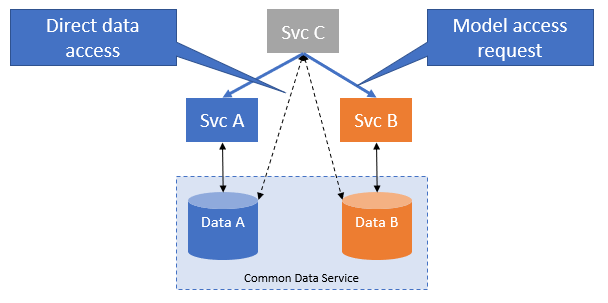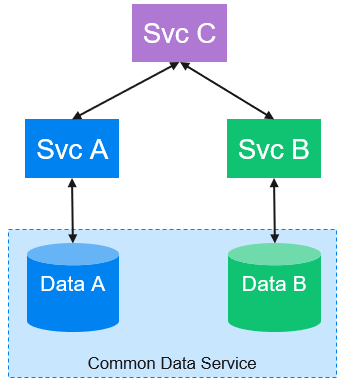...
The pink software encapsulates the integration with other data stores. This is being taken by the temporal DB PoC. This PoC needs to provide a feed of change notifications for any joint demonstrations. Configuring the parts of the model that will emit change notifications is part of the stretch goal.
Data lake and access control
The CPS will make it possible to share data across components. This is beneficial where it is expensive to source data or access latency is a concern.
The ability to share data raises concerns w.r.t. uncontrolled coupling between components. This makes system maintenance difficult.
The CPS will provide a balance between these competing needs.
Solution
To be useful to an application, data must be accessible and possible to interpret.
Access is provided by the CPS. Access may be qualified as read only or write.
The ability to interpret data requires access to the model that defines the structure and constraints of the data.
Consider the following scenario.
Svc A and Svc B are considered to own their data, A and B respecively.
Data A and Data B are stored in a Common Data Service (e.g. DBMS). This is important, but not relevant to this discussion.
Data A and Data B may represent multiple instances of the same model – for example there may be multiple instances of the same xNF in the scope of the ONAP system, each would need to be in a separate tree, all compliant to the same model.
Svc C would like to access Data A and Data B, without going through the public interfaces exposed by Svc A and Svc B.
Svc C must petition Svc A and Svc B for access rights (this may be a design or run-time activity) to their data.
Once access has be provided by the owners (Svc A and Svc B) Svc C may use this permission to access data directly.
Svc C cannot completely interpret the data without access to the models. The model is the responsibility of the owning service, and is provided to Svc C together with the permission and any relevant instances of data trees.
This is also the case for the CPS. It cannot persist or validate data without access to the model. It is the responsibility of the data owner to provide the model to the CPS prior to data access.
The run-time aspect of the granting of permission has some potential to also address some race conditions.
The key benefits are: (1) Data lake use cases are enabled; (2) Coupling between components a the level of 'shared' data are explicitly declared/published.
PoC implemetaion
The PoC will start with a subset of the above implementation. Noting in the PoC implementation will preclude the development of the above.
All access to data will be via the owning service.
Model handling
Below a simplified view of model handling artifacts and their relationships.
...

